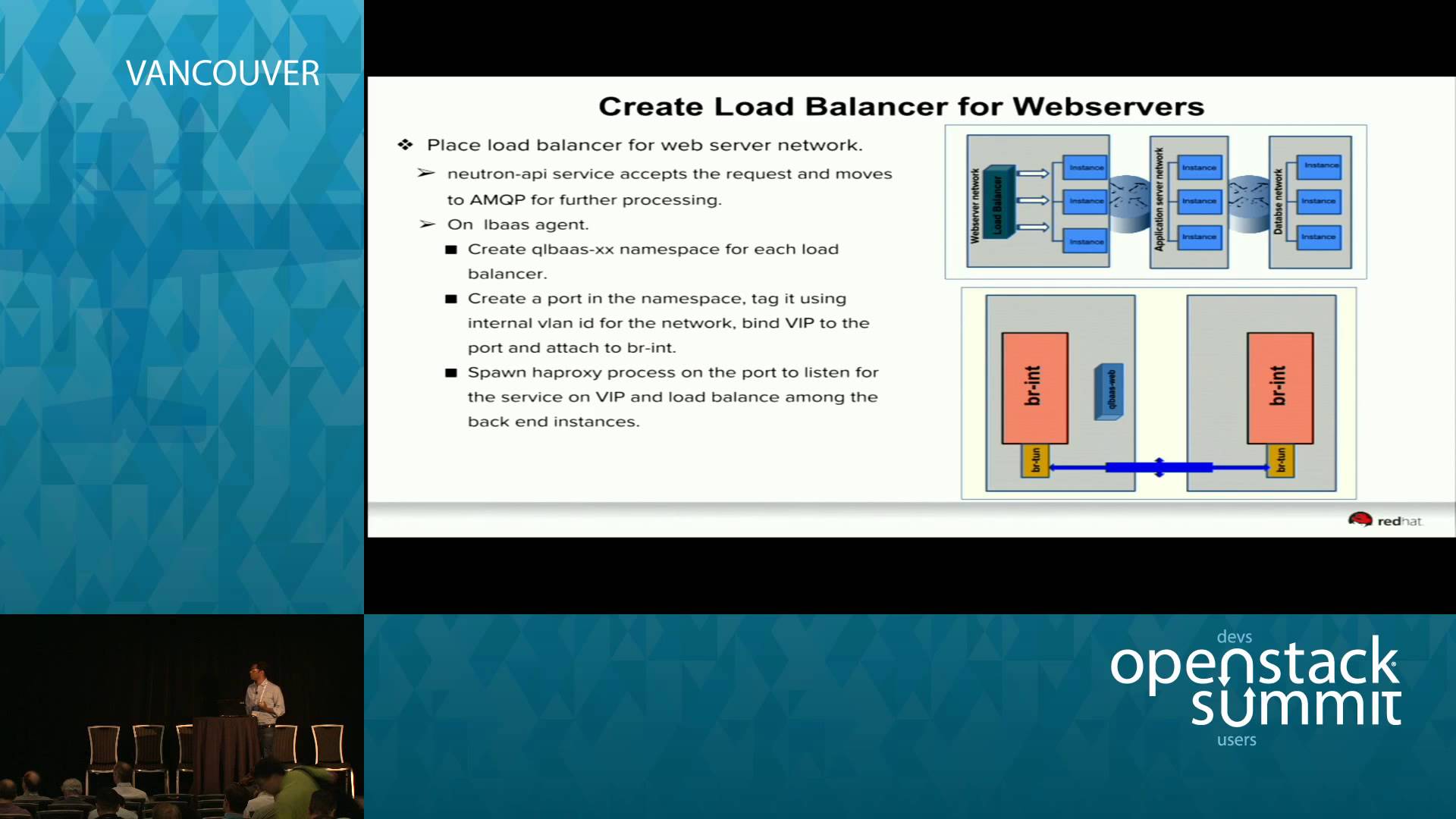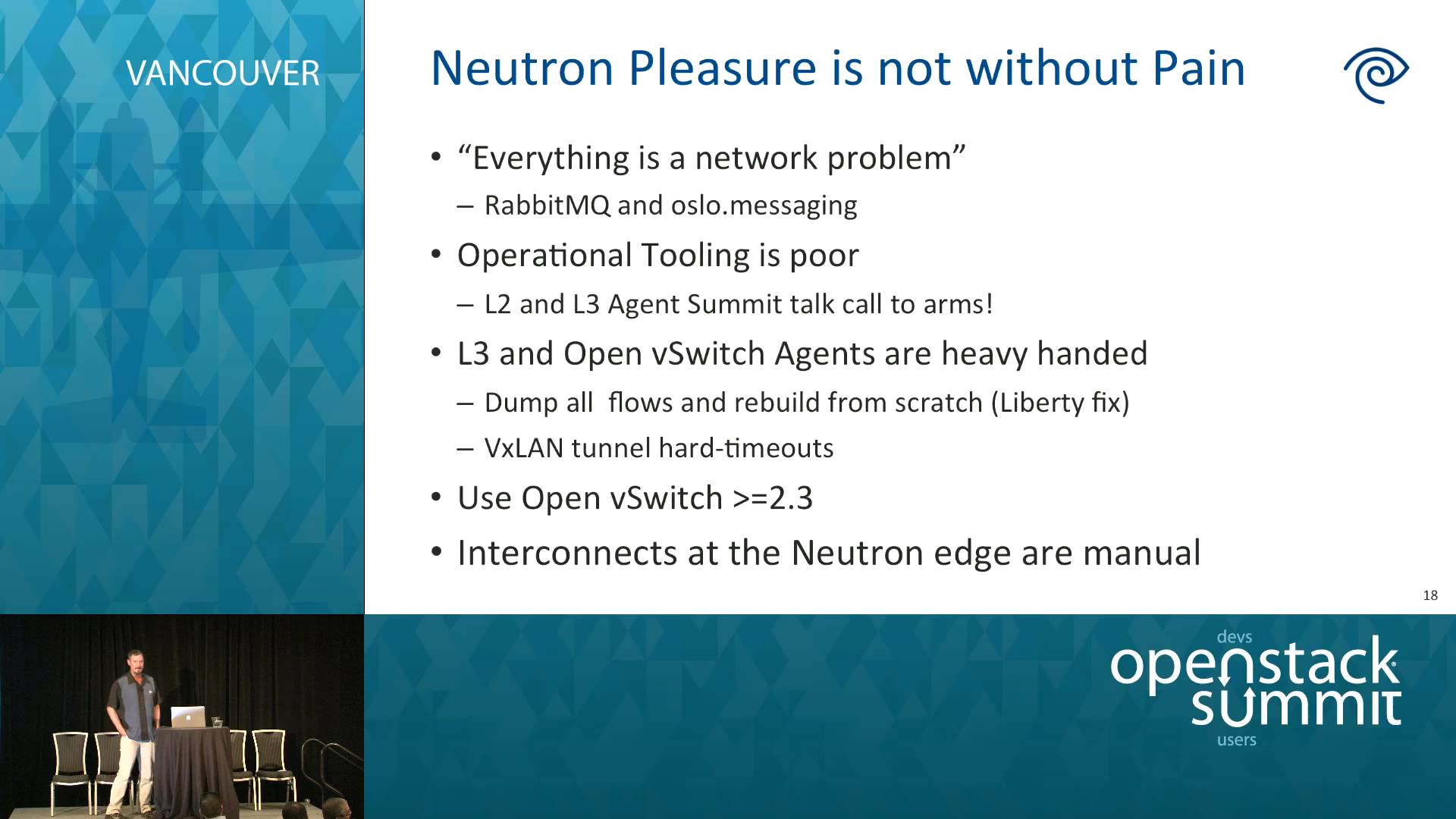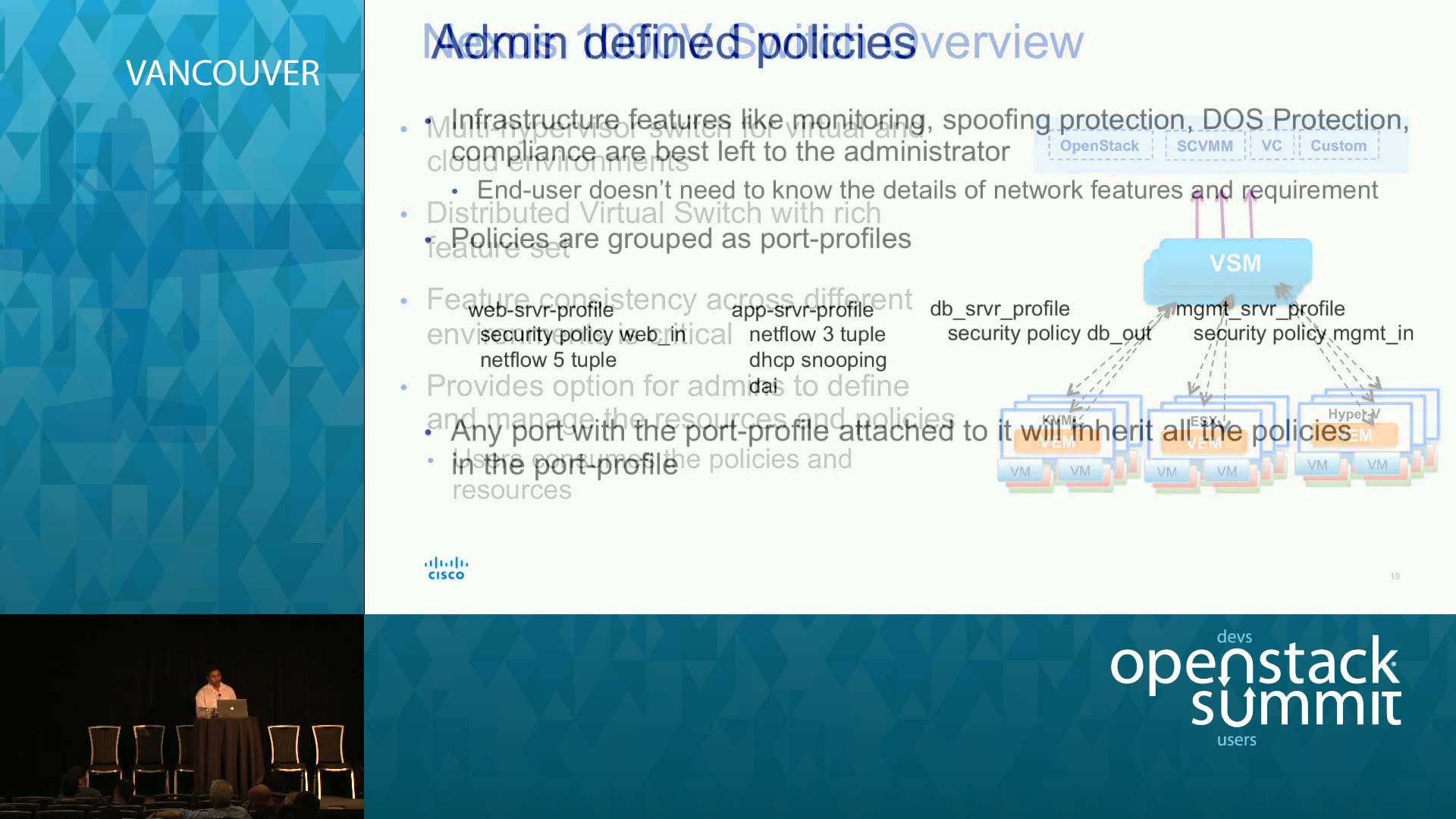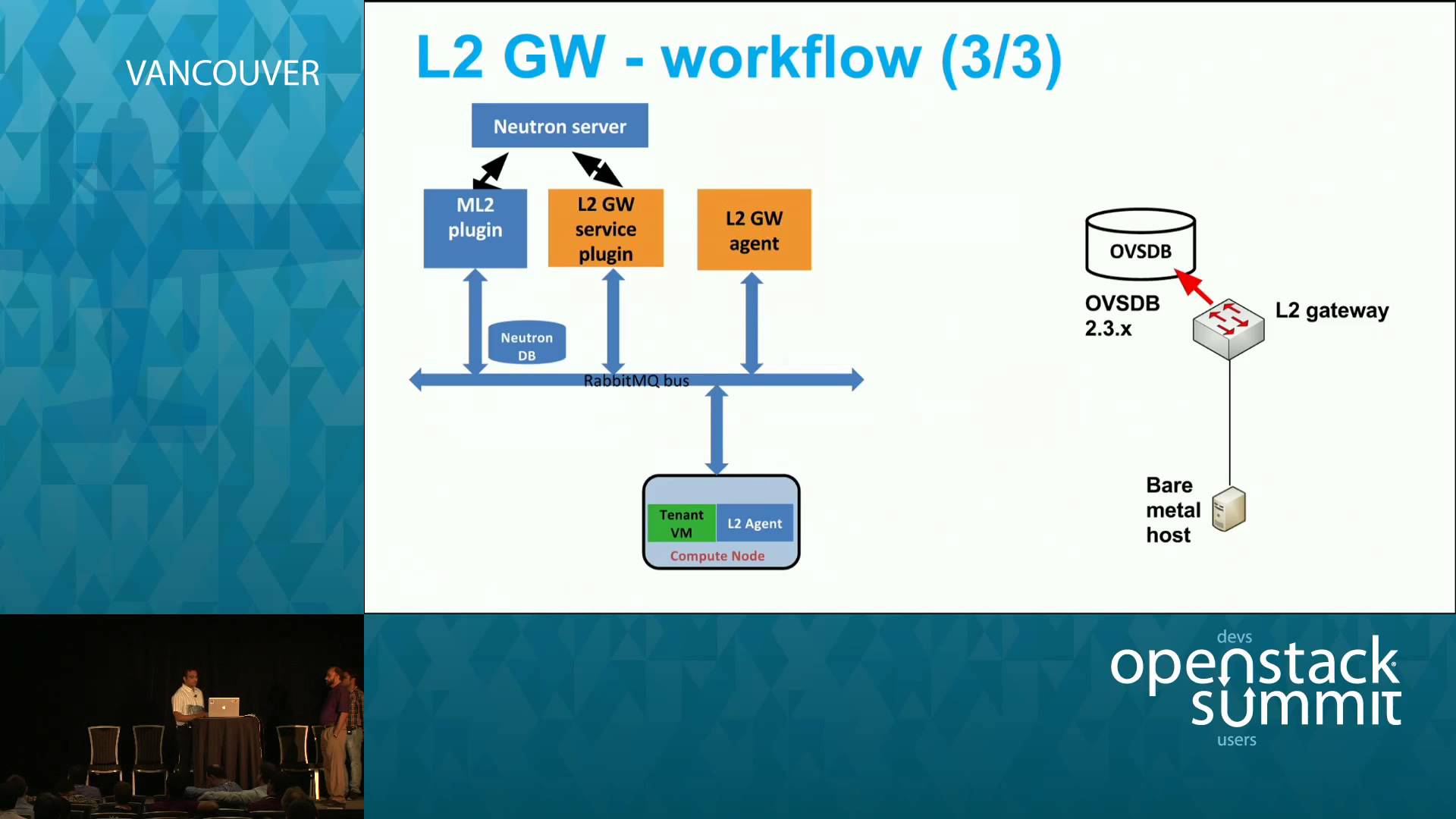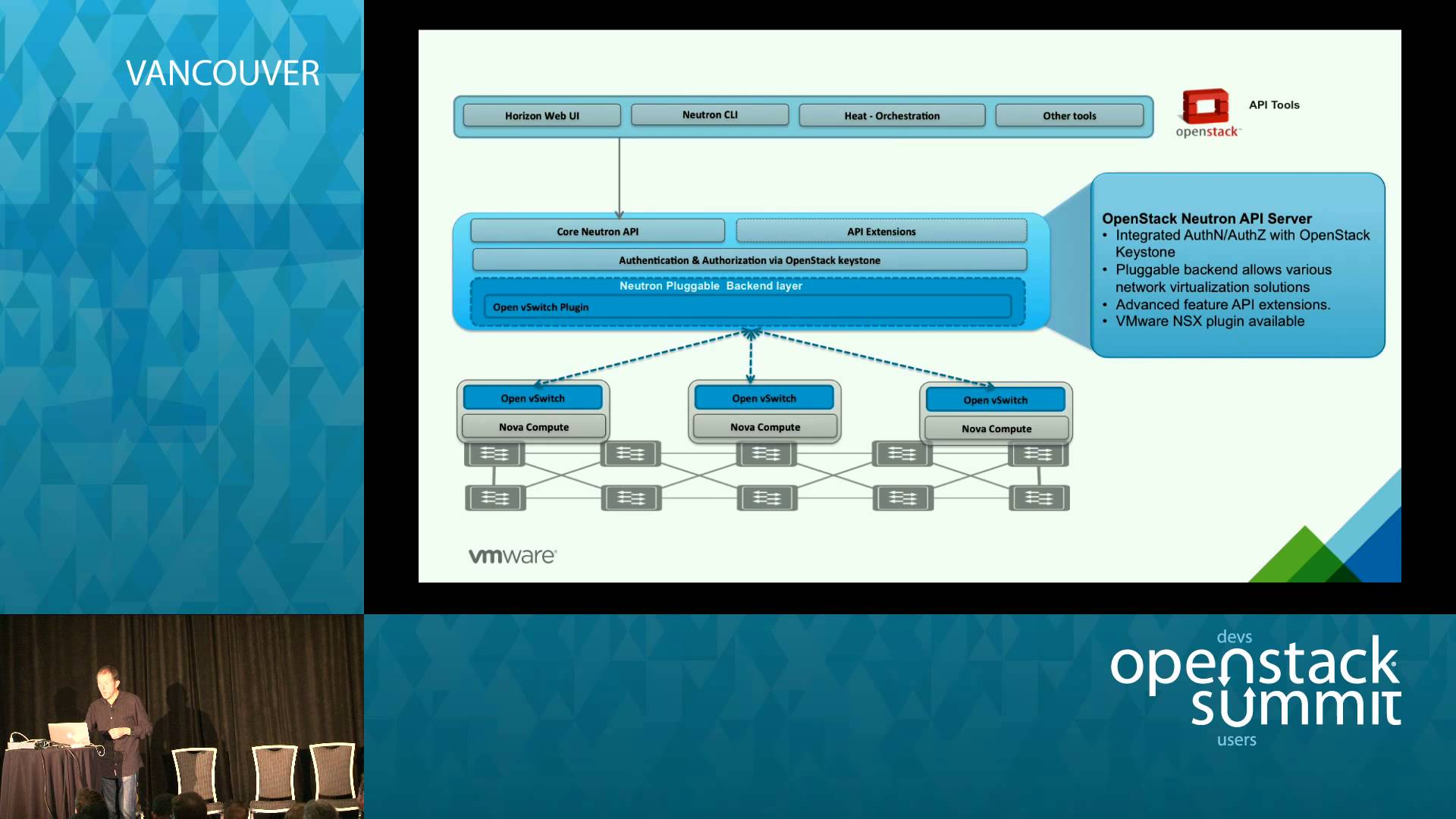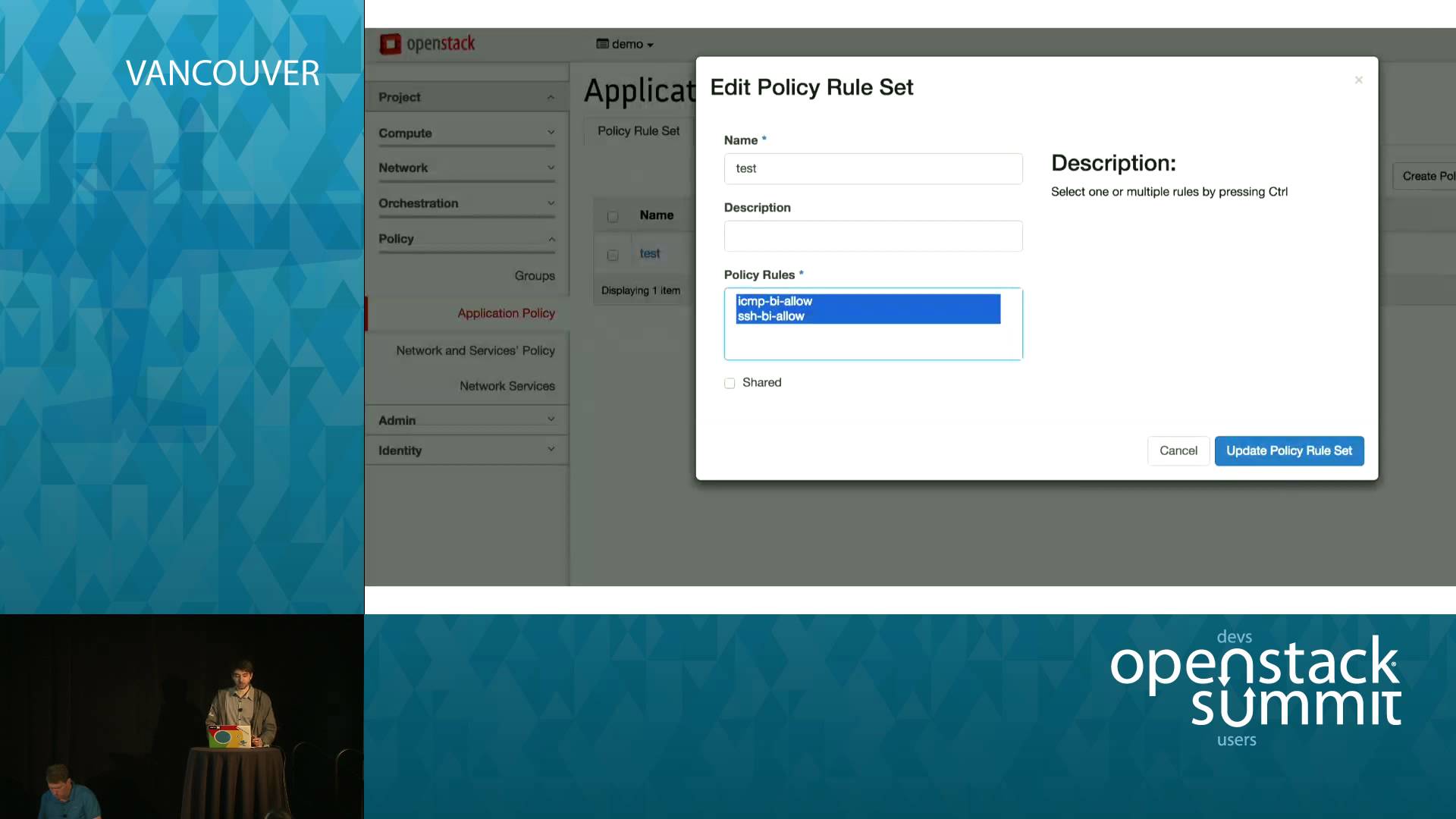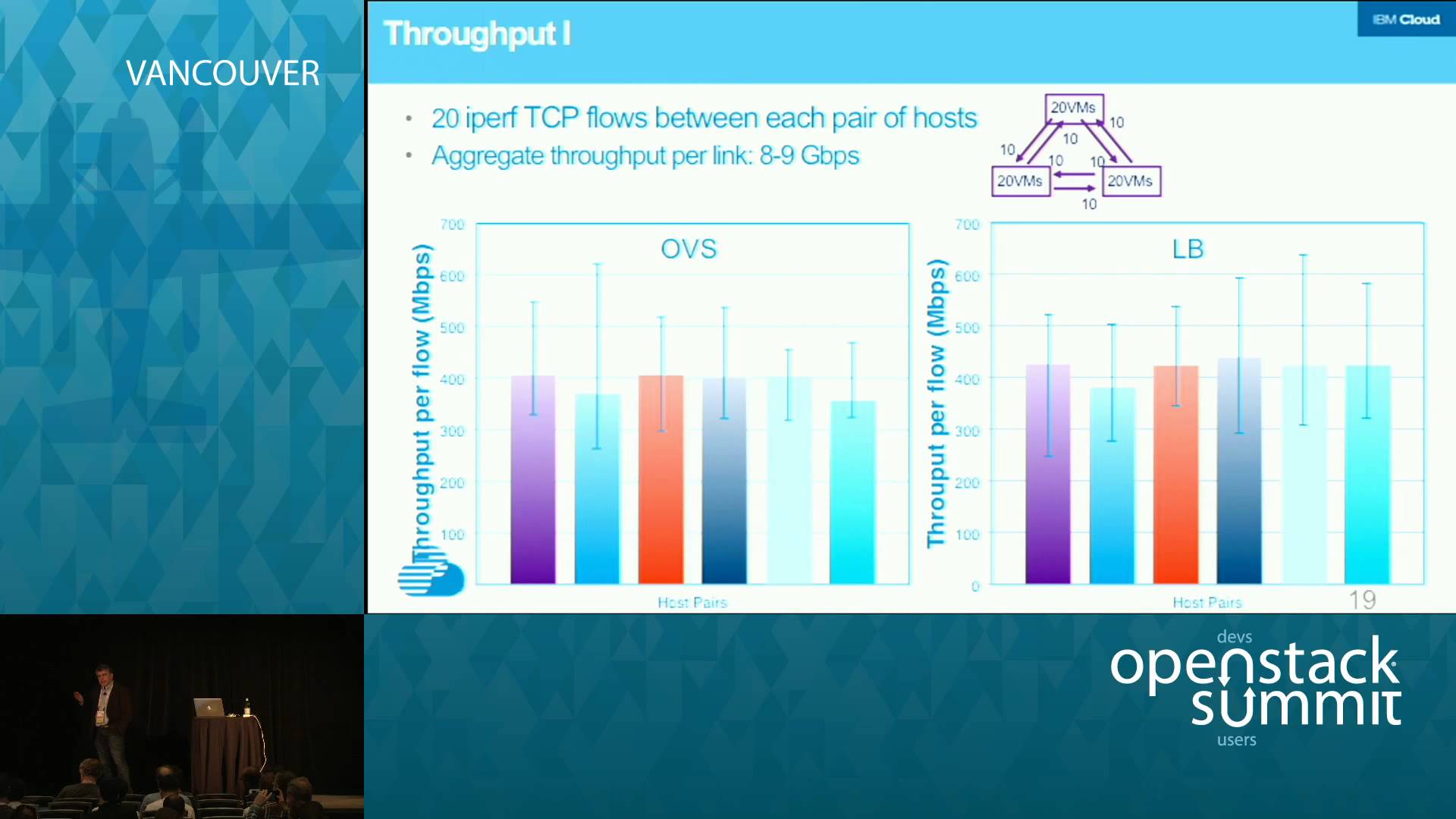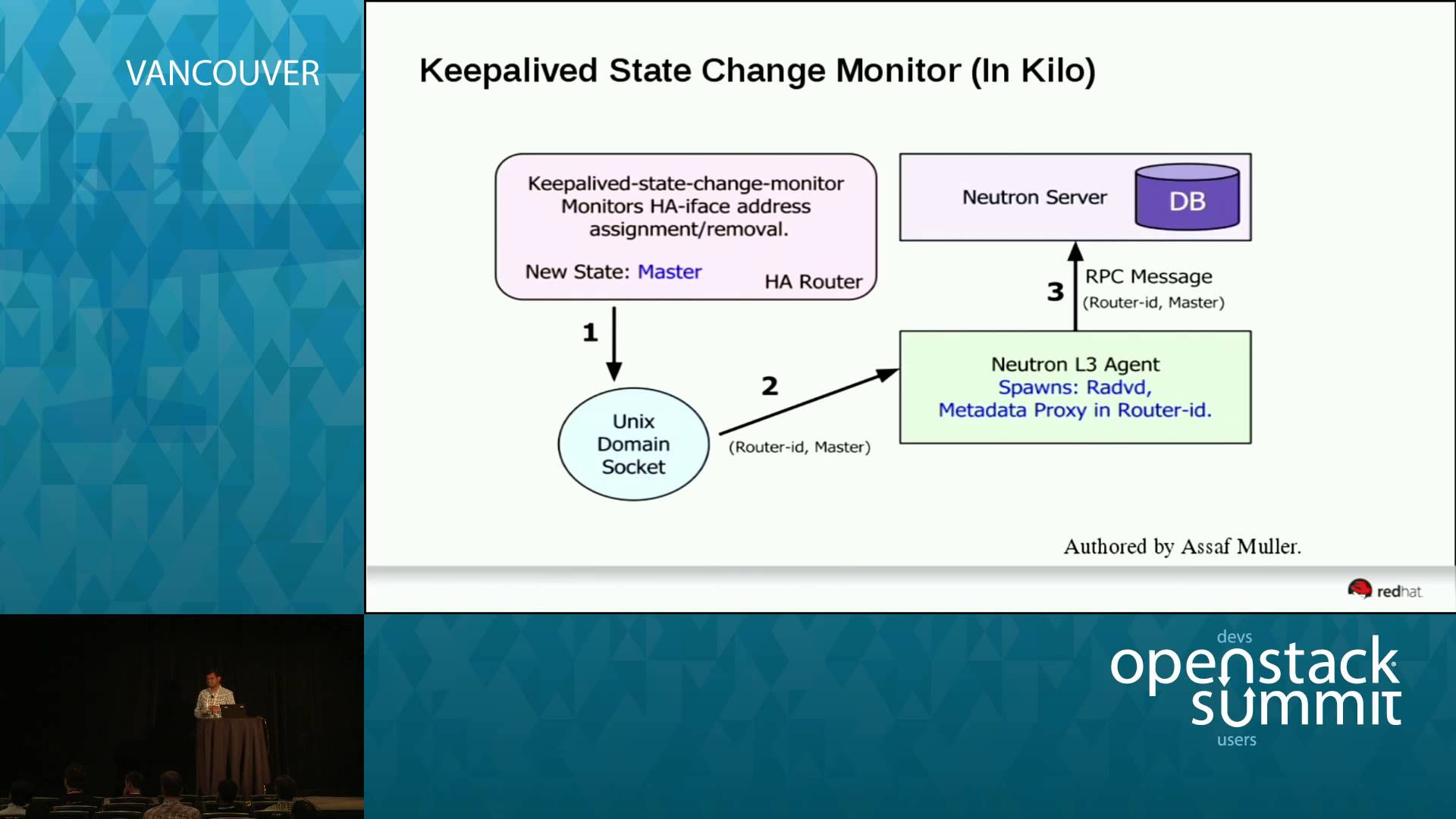In this session, I will correlate an example multi-tier application network architecture with Neutron and demonstrate how beautifully Neutron builds the topology, combining multiple open source components. From a high level, you’ll learn about the process in a network deployment of an example multi-tier application—composed of a web server cluster, application server cluster, and database… Continue reading How Neutron builds network topology for your multi-tier application?
Tag: neutron
Neutron in the Real World – TWC Implementation and Evolution
Time Warner Cable runs “stock” Neutron with ML2 and VxLAN at a scale of hundreds of nodes in multiple data centers. Today many who are standing up an OpenStack Clouds prefer Nova-Network over Neutron or, at best Neutron with a flat networking. Reasons are largely stated as Neutron complexity, maturity, performance, bad experiences during testing,… Continue reading Neutron in the Real World – TWC Implementation and Evolution
OpenStack: Neutron extension framework overview and use cases
Neutron provides an extension framework for plugin(s) and ML2 mechanism drivers to extend/enhance the capabilities of the Neutron. This can be used to support advanced functionality provided by a plugin. Also extensions are recommended way to expose experimental version of a feature before it is incorporated in the standard Neutron framework. In this session we… Continue reading OpenStack: Neutron extension framework overview and use cases
Bringing provider networks into OpenStack using L2 gateway
Cloud computing technologies like Neutron have made overlay networking a solution for multi-tenant environments: workloads, themselves virtualized, are interconnected through isolated logical networks that are layered on top of the physical networking. However, in typical data centers, not every machine is virtualized: “bare metal” servers are still common, as they run software that is not… Continue reading Bringing provider networks into OpenStack using L2 gateway
Supporting Virtualized Telco Functions with OpenStack
Network Functions Virtualization (NFV) is starting to move from PoCs to early commercial stages. This talk discusses technical approaches to supporting telco NFV applications with OpenStack, with a focus on Neutron virtual networking. We work through a service chaining example to drive a discussion of how OpenStack can be used today for NFV and where… Continue reading Supporting Virtualized Telco Functions with OpenStack
OpenStack: Group Based Policy Hands-on Lab
Group Based Policy (GBP) provides declarative abstractions for achieving scalable intent-based infrastructure automation within OpenStack. In this session, users will access a GBP + Neutron setup and have a tour through the most common use cases, including but not limited to policy-driven application life cycle management and advanced service chain deployment. Users will learn how… Continue reading OpenStack: Group Based Policy Hands-on Lab
OpenStack Networking: It’s time to talk Performance
Now that Neutron has been established as the OpenStack Networking component and with the ongoing efforts in the Neutron community to make it a more stable, more efficient, and more scalable component, it is time to provide a broad analysis of the performance and scalability of Neutron. In this talk we discuss a methodology for… Continue reading OpenStack Networking: It’s time to talk Performance
IPv6 impact on Neutron L3 High Availability
In OpenStack Juno release, L3 high availability in Neutron is implemented using Keepalived, which internally uses the VRRP protocol. It is an active/passive solution where a Keepalived instance is spawned in every router namespace and the instances communicate via a dedicated high-availability network, creating one per tenant. The IP addresses that are used in the… Continue reading IPv6 impact on Neutron L3 High Availability
